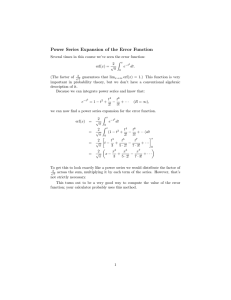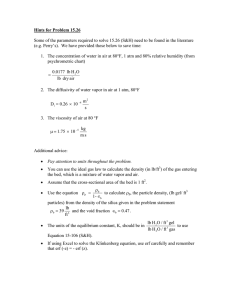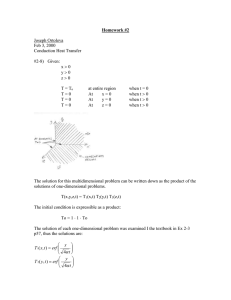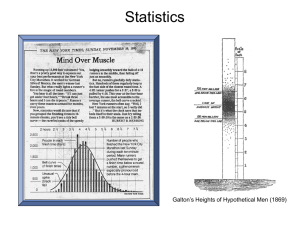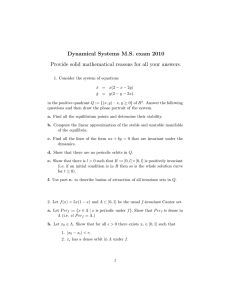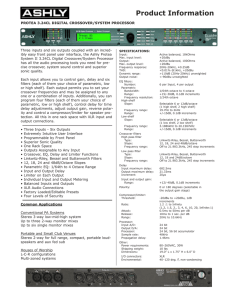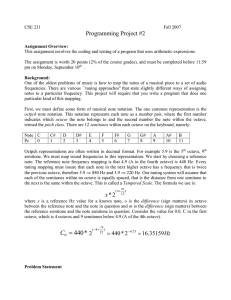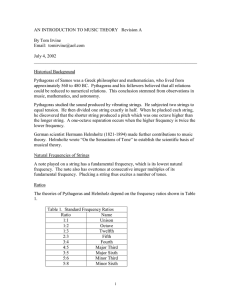EE499 – Digital Image Processing HW 3A: 3.1, 3.3 HW 3B: 3.8 3.1)
advertisement
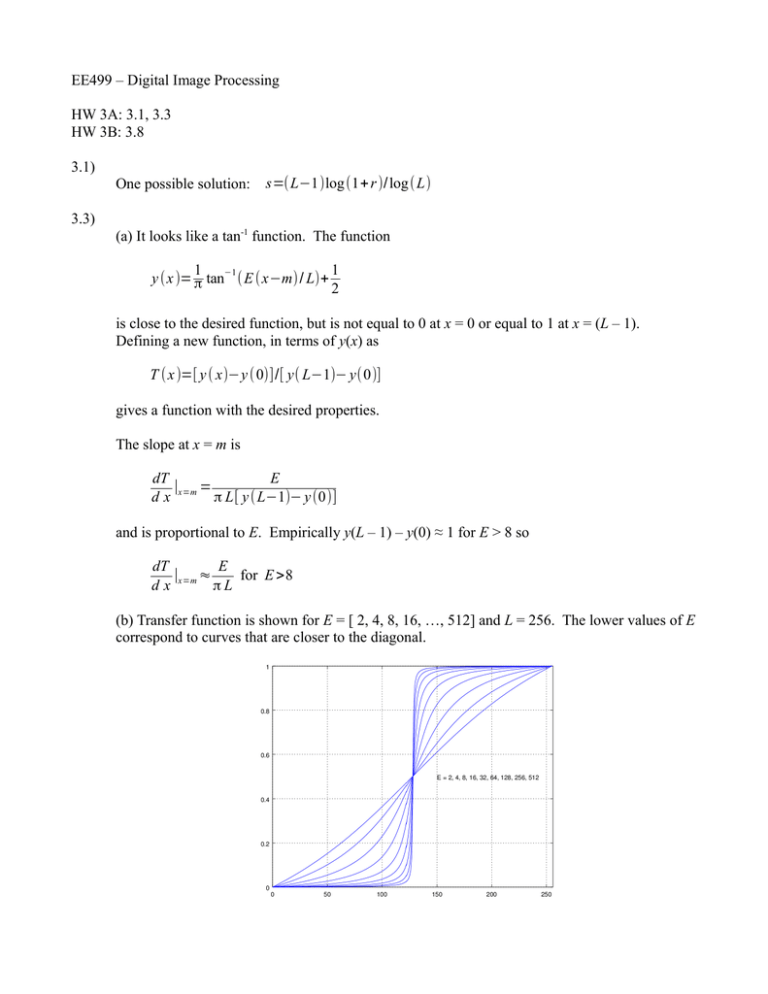
EE499 – Digital Image Processing HW 3A: 3.1, 3.3 HW 3B: 3.8 3.1) One possible solution: s=(L−1)log(1+ r )/log( L) 3.3) (a) It looks like a tan-1 function. The function 1 −1 1 y (x )= π tan ( E (x−m)/ L)+ 2 is close to the desired function, but is not equal to 0 at x = 0 or equal to 1 at x = (L – 1). Defining a new function, in terms of y(x) as T ( x )=[ y ( x)−y ( 0)]/[ y( L−1)− y(0)] gives a function with the desired properties. The slope at x = m is dT E ∣x=m = dx π L[ y ( L−1)− y (0)] and is proportional to E. Empirically y(L – 1) – y(0) ≈ 1 for E > 8 so dT E ∣x=m ≈ for E >8 dx πL (b) Transfer function is shown for E = [ 2, 4, 8, 16, …, 512] and L = 256. The lower values of E correspond to curves that are closer to the diagonal. (c) An E = 16384 value results T(127) 256 – 1 = 0.263 and T(129) 256 – 1 = 253.7 so should effectively act as a thresholding function with 256 output levels. 3.8) m [ ( r−m σ )+Φ ( σ )−1 ] s=( L−1) Φ where Φ ( x) is the CDF of the standard normal distribution. Alternatively, in terms of the error function m σ )+ erf ( σ ) ] ( L−12 )[erf ( r−m s= Octave has a normcdf function which evaluates the CDF of an arbitrary (non-standard) normal distribution. So this equalization method can be implemented in a single line of Octave code: function b = xx_imgaussianeq(a) b = uint8(255*normcdf(double(a),mean(a(:)), std(a(:)))); end Here are the original washed-out pollen image, the image after processing using the function above, and the before-and-after histograms:

